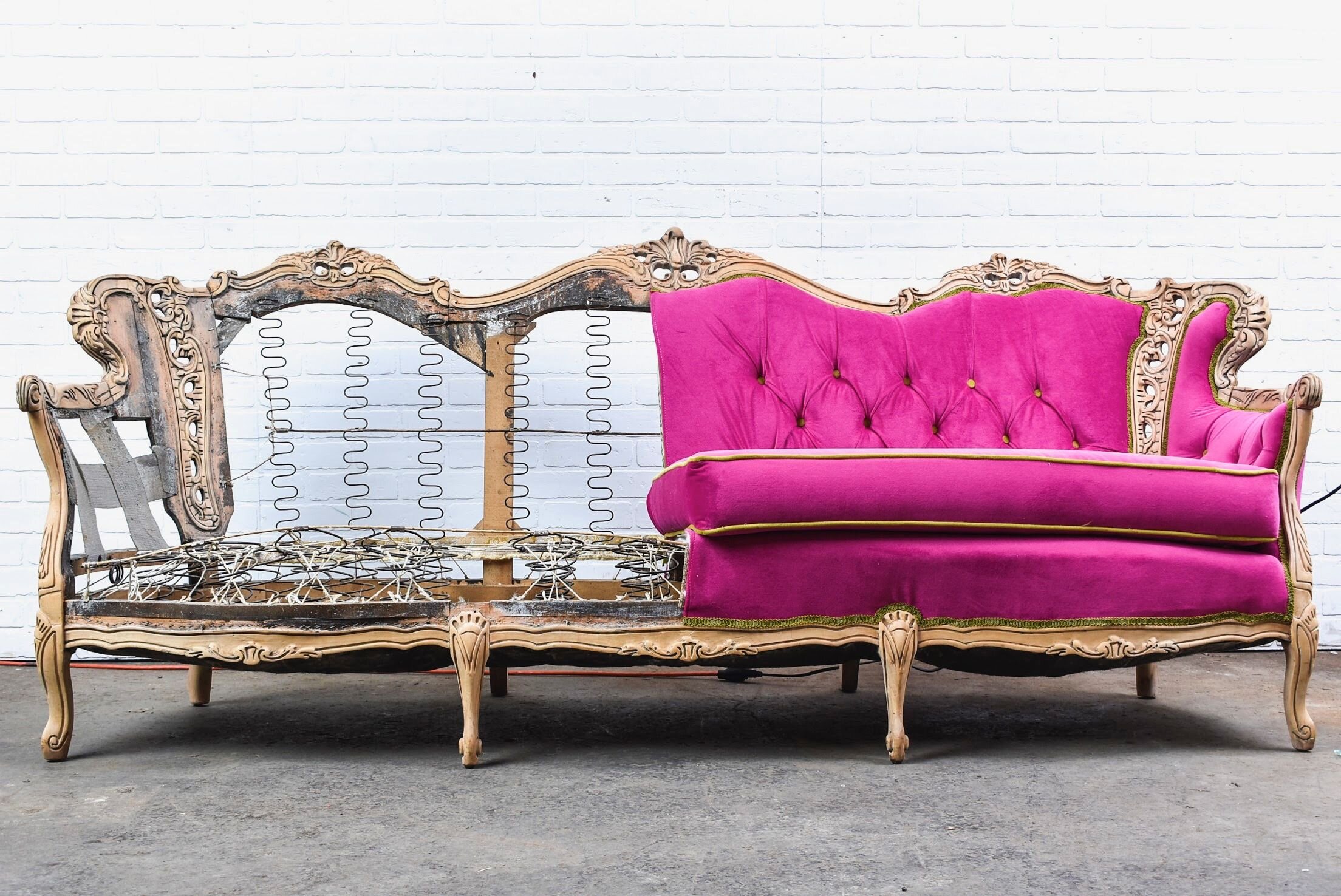The Art of Reupholstery
So, you’ve got some vintage furniture. Maybe it’s one of Grandma’s old sofas that has been around forever, and you can’t bear the idea of parting with it but it’s just not in great shape, and it’s not really all that comfortable. Maybe you just went out to your local vintage shop and snagged an amazing find but it’s a little dingy and you’re not sure you trust where it’s been before. Or maybe it’s something you’ve had for a while but you’re re-decorating and it doesn’t quite fit with your new design scheme. Well, it might be time to look into reupholstery.
If you take to the internet and start googling reupholstery you’ll turn up a ton of DIY articles assuring you that reupholstery really isn’t that hard and you can absolutely do it yourself. Maybe you have the time and energy and attention to detail that it takes to get things just right but is it worth the risk of amateur error just to save a few bucks. One misstep and you could end up ruining that beloved piece you just wanted to spruce up a bit. In this case, we highly recommend leaving it to the professionals.
That’s because upholstery is truly an art form. Any upholsterer worth their salt knows a thing or two about antique furniture and cares about the pieces that they work on. And they know that not every piece of furniture is worth the trouble of reupholstering. Just because you love it, doesn’t mean that old piece of furniture is going to stand the test of time. But when the bones are high quality, it makes sense to revitalize a piece rather that to give it up and let it go.
So, what does the art of reupholstery really look like? It’s often more than just cutting away old fabric and putting some new stuff on. Don’t get us wrong, there are times when a fabric replacement is all that it takes to get a piece into ship-shape but many times if the fabric is battered, the insides are too. And the inside of a piece of upholstered furniture is pretty important to the constitution of the piece. It is springs and cushions and padding and wood and, although you can’t easily tell the condition of all that just by looking at the outside, when you take off the fabric, the problems can be glaring.
The process begins with disassembly – taking the piece apart, removing the old fabric, old padding, anything that needs replacing. The frame of the piece will then be thoroughly examined. If there are any issues with the wood of the frame, they are repaired. These repairs are done while trying to preserve the original nature of the piece as much as possible but sometimes small changes are necessary to keep things in good working condition.
Next, the interior components of the piece will be either restored or replaced. Springs in chairs often need to be restrung and for the most part, any padding will simply be ditched in favor of new, soft, workable cushions. There are different types of cushions that can be used when replacing the old stuff. You might choose a down/feather blend, foam padding, or a down-covered foam pad. Different options, of course, come at differing costs and each offers its unique benefit to the process.
When the interior has been restored and everything is in fine condition once again, it is time to re-cover the furniture with a new fabric. The fabric should be chosen carefully, as it will be exposed to wear and tear for many years to come in your home. Perhaps even more importantly, however, the way the fabric is installed makes a big difference in the quality of the finished piece. Patterns should be lined up properly, seams should be sewn tightly, staples should be carefully used to hold everything in its proper place. If you have multiple pieces using the same pattern, like a set of dining room chairs for instance, do you want all of the chairs to look the same or does pattern placement not matter to you? A good upholsterer will take all of this into account and attempt to produce the highest quality piece they can with what they have to work with.
And when everything is sewn up tight and screwed back together, your reupholstery job is finished. The final product is hopefully everything you loved about your old stuff but with new life breathed into it. It’s comfortable to sit on again. It doesn’t sag in places anymore. It looks full and fresh, but it still has the character about it that you fell in love with in the first place. That’s what a good upholstery job will do for you – make what is old new again.
VNTG Home has an upholstery team that can save your vintage furniture from the end of the line. They are experts in restoring your old stuff so that you can re-love it. You can trust us to give your favorite things the quality care they deserve. Contact us today to talk about bringing the life back into your vintage home décor.



